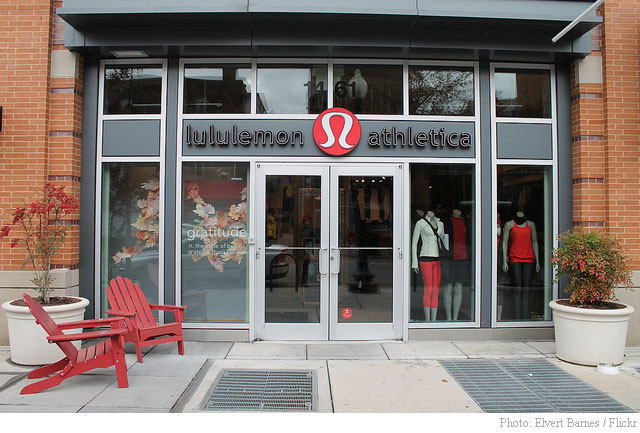- Simeon Siegel from BMO Capital Markets lowered Lululemon’s (LULU) price target to $302 from $313, viewing it as a strong brand with $6.5 billion in U.S. sales that’s overstretched, facing competition and a maturing growth phase.
- Lululemon’s margins impress at 60% and over 20% operating profit, far above Nike’s (NKE) 13%, but U.S. growth at 1% versus Asia’s 38% or 39% raises concerns about sustainability if domestic sales dip to a 1% decline.
- Siegel sees CEO Calvin McDonald’s modest U.S. growth forecast as plausible now, but a shift to declines could shrink the business toward $3 to $4 billion, testing its high valuation if markdowns rise to boost slowing revenue.
Simeon Siegel, managing director at BMO Capital Markets, appeared on CNBC’s Money Movers to unpack why his firm trimmed Lululemon’s (LULU) price target from $313 to $302, a slight tweak reflecting a view of the retailer as strong yet overstretched. He pointed to Lululemon’s massive $6.5 billion in U.S. sales – a figure that towers over the $3 to $4 billion mark where many domestic brands peak and start losing steam – suggesting the company has stretched its market impressively but now faces a fight to hold it. Competition is creeping in, and while the brand remains a powerhouse, Siegel sees signs of maturation, where growth naturally slows, a critical lens when evaluating a stock priced for expansion.
Lululemon’s recent quarter showed resilience, with margins holding at 60% and operating margins soaring past typical retail benchmarks like Nike’s (NKE) 13%, hitting over 20%, a feat Siegel called a double-edged sword—great when sales climb, vulnerable when they stall. The company’s U.S. business hovered near flat at 1% growth, while Asia surged 38% or 39%, a small but promising boost that could offset domestic softening if it scales. Yet, Siegel cautioned that if U.S. sales tip from modest growth – say, 1% positive – to modest declines, like 1% negative, it’s a big shift, potentially dragging the business back toward that $3 to $4 billion range, especially if markdowns rise to chase revenue, as management often does when growth falters.
CEO Calvin McDonald’s outlook of modest U.S. sales growth struck Siegel as believable for now, but he’s watching the back half of the year closely, noting that “modest” could mean anything from slight gains to slight losses—a small numerical gap with huge implications. International opportunity, particularly in Asia, offers hope, but Siegel questioned whether it’s enough if the U.S., Lululemon’s core, saturates. The stock’s valuation hinges on profits double that of peers like Nike, so any slip in those margins could rattle investors, making this a pivotal moment for a brand balancing dominance with emerging limits.
WallStreetPit does not provide investment advice. All rights reserved.
- Bulenox: Get 45% to 91% OFF ... Use Discount Code: UNO
- Risk Our Money Not Yours | Get 50% to 90% OFF ... Use Discount Code: MMBVBKSM
Disclaimer: This page contains affiliate links. If you choose to make a purchase after clicking a link, we may receive a commission at no additional cost to you. Thank you for your support!




Leave a Reply